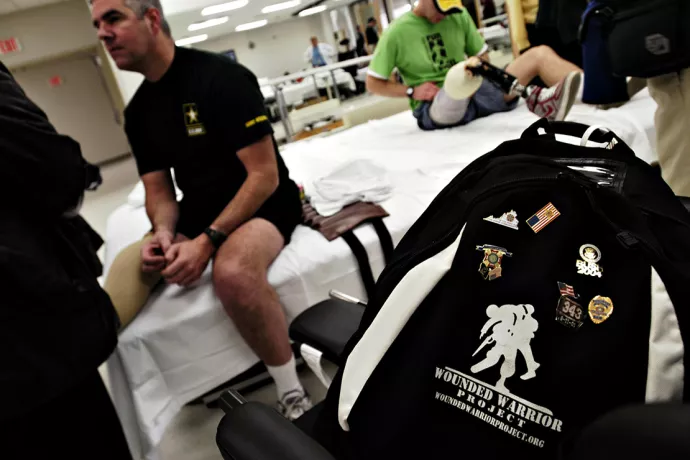
Waiting for a cure: UTM researcher explores military medicine’s harmful ‘curative promise’
In our post-9/11 world, many American soldiers returning from Iraq or Afghanistan with traumatic injuries and illnesses have put their lives on hold – sometimes for a decade or more – as they await a cure. But this approach does more harm than good, says medical anthropologist Zöe Wool, an assistant professor in U of T Mississauga’s department of anthropology.
“That faith in medicine’s curative promise is actually harmful to people,” she says. “It tends to prevent them from learning to live with their disabilities – disabilities that in most cases are not going to go away – and from getting on with their lives.”
Wool’s years of fieldwork involved spending countless hours with more than 70 U.S. veterans and their families living on the military base at the Walter Reed Army Medical Center (since renamed the Walter Reed National Military Medical Center) in Washington, D.C., as well as at sites in Texas, Louisiana and Florida. The veterans – almost all men – had sustained injuries such as broken or shattered bones, severe burns, damaged limbs, traumatic brain injury and post-traumatic stress disorder (PTSD). As they went about their daily lives, she hung out with them and their families, made meals with them, joined them at events and interviewed them extensively.
What struck Wool was the way many had stalled their lives in anticipation of getting back to “normal.” That focus is certainly understandable, she says, stemming from a combination of factors: our society’s reliance on Western medicine to fix what ails us; the pre-eminence of Walter Reed as the U.S. military’s flagship medical facility, renowned for innovative technologies in postwar medical care; the stigmatization of bodies and minds that don’t meet society’s narrow definition of healthy; and clinicians’ definitions of what constitutes successful medical treatment.
For example, there’s a skewed societal view that a fit young GI Joe exemplifies masculinity while a disabled veteran signifies emasculation, Wool says. Compounding that is that many clinicians tend to see amputation of a limb as a medical failure, so there’s been a trend away from doing high, clean, early amputations in favour of trying to salvage as much of a limb as possible. But that may involve years of massive trauma to the veteran, such as multiple surgeries, repeated cycles of rehab, ongoing pain and chronic stress. “Often they have worse mental health outcomes, even if they may ultimately have better functional outcomes,” she says.
Sometimes letting go of the idea of being cured is the best way for people to move on with their lives. Wool tells the story of one veteran, Devin, with multiple diagnoses – fibromyalgia, chronic fatigue syndrome, PTSD and traumatic brain injury – whose entire life centred on drug regimes, medical treatments and specialist appointments for several years. He and his partner had shelved plans to adopt a baby until Devin was cured. Finally, they realized this obsession was exhausting them both and making Devin sicker. Rather than seeing his illnesses as enemies to be conquered, they began seeing them as things to coexist with. Instead of adopting an infant, which would be too challenging for Devin, they adopted a nine-year-old, who otherwise might have been less likely to be placed. Wool says, “What can happen when you go from obsession to accommodation? In this case, the creation of a really beautiful family.”
Wool suggests her findings can apply equally to non-veterans with chronic illnesses or disabilities.
Clinging to the hope of a cure perpetuates the marginalization of people with physical or mental disabilities, leads them to blame themselves for their perceived imperfections, forces them to try to hide their disabilities away, and encourages a false distinction between “normal” and “pathological,” argues Wool. Her paper on the subject appeared in the July 2020 issue of the journal Medical Anthropology Quarterly. She also authored the 2015 book After War: The Weight of Life After Walter Reed, and is working on a new book that aims to bring inclusive concepts from disability communities into military audiences. Over the next year she’ll be creating a free online course in disability studies geared toward U.S. veterans.
In our current climate of COVID-19, she says we’re increasingly aware that none of us has a body guaranteed to always function perfectly. “One of the things we can do is be less ashamed about that, and to imagine a social world, a built environment, a political world in which we have space for all of us as we are.”
